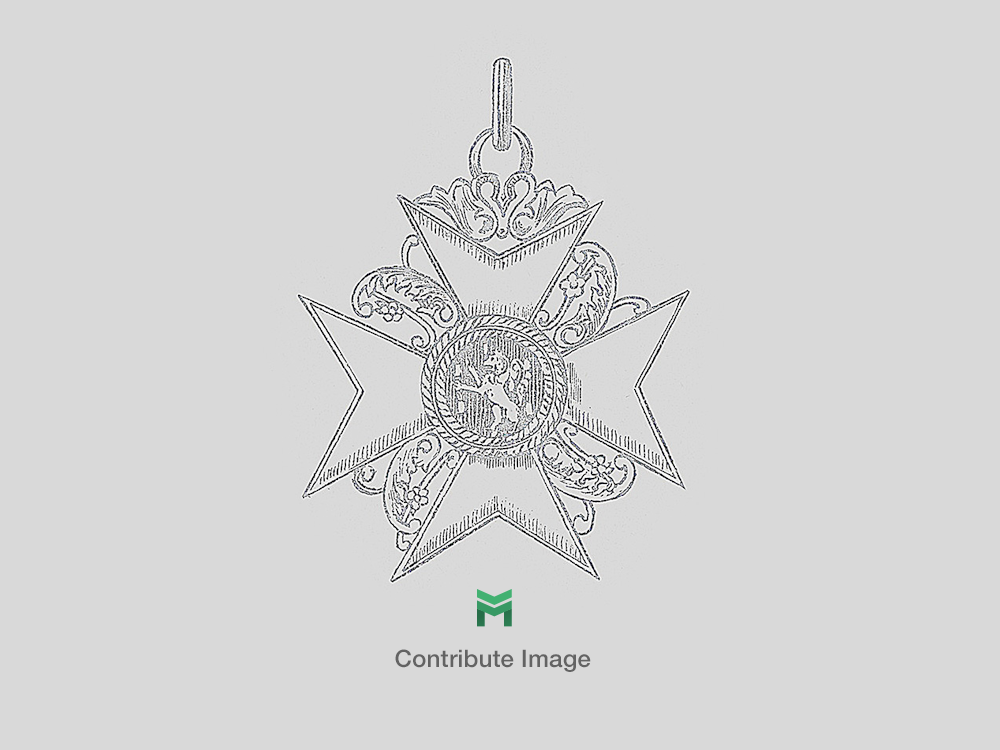Afrikakorps Heer Staff Officer's Tropical Field Cap with Soutache
SKU: 23.GOR.01.01.01.01.01.02.011
Estimated market value:

Estimated market value:
Attributes
Physical Description
Piping: silver
Soutache: carmine
History
During the Second World War, German troops stationed in northern Africa are generally referred to as the Afrikakorps. Technically, this is not entirely correct, since some German units operating in Africa were not actually part of the DAK (Deutsches Afrikakorps), and some units of it were, in fact, Italian ones. However, for the purpose of collecting so-called “tropical” uniforms and insignia, collectors have simplified the meaning of the term.
The first German troops were sent to northern Africa in February of 1941, to support their Italian allies against the British. The climate of the African continent made it necessary to wear specialised uniforms and gear that not only supported the soldiers in serving in a hot and arid environment, but also helped them in blending in with the landscape, which, in general, presented itself as brown, olive, khaki, or sand/tan in colour. Worn over long periods of time under the blistering desert sun, some uniforms were eventually bleached to white or off-white. Uniforms and insignia in these colours are often referred to as “tropical”, and it is worth noting that they weren’t just worn by members of units stationed in Africa, but in the entire Mediterranean theatre of war, including southern France, Italy, the Balkans, and Greece, as well as in southern Russia during the summer months. Tropical uniforms were worn by members of all three branches of the Wehrmacht: the Heer (army), the Kriegsmarine (navy), and the Luftwaffe (air force). Members of the Waffen-SS stationed in southerly regions also wore tropical-style uniforms, and even though they technically have no connection to the DAK, all tropical uniforms and insignia of all branches of the German military are listed here.
The Afrikakorps visored field cap is known as the “Drillichfeldmütze”, to go with the “Drillich” uniform that was worn in warm or tropical weather. It was officially introduced in 1941 and thus can be seen as a precursor to the M43 visored field cap. Officers wore aluminum piping, while generals wore gilt piping. The same colours were used for the insignia of upper ranks. Initially, the cap had a soutache in the branch colour of the wearer (except for generals who wore a gilt soutache). This was discontinued on September 8, 1942.
The cap was made of herringbone twill, initially composed of linen, but quickly changed to rayon or synthetic cotton. The design is simplified, compared to the more elaborate M43 visored field cap. The tropical cap has no front buttons and no ear flaps. However, a seam gives the impression of flaps that are permanently affixed to the sides.
The embroidered insignia, the red, white, and black cockade in a wreath of oak leaves and the national eagle above it, usually came on a one-piece trapezium. It was made with silver-coloured wire for officer ranks.
Branch colours on German Heer headgear was as follows:
Black was worn by Engineer units.
Black/White was worn by Panzer Engineers.
Copper Brown was worn by Motorcycle personnel.
Light Brown was worn by Signals units until 1936, and by Construction troops.
Carmine was worn by the Führer Staff, General Staff Officers, Staff Officers of the Supreme Command of the Army, and all Veterinary branches.
Bordeaux Red was worn by Smoke & Chemical personnel.
Wine Red was worn by Judicial officials.
Bright Red was worn by Generals, Artillery units, and Ordnance Officers (until 1944).
Rose or Pink was worn by all Armored units (including Panzer troops, and Schützen Brigade Staff).
Orange was worn by Recruiting personnel, Ordnance troops, Ordnance Officers (since 1944), and Field Gendarmerie units.
Bright yellow was worn by Cavalry units, and Light Division Staff.
Lemon yellow was worn by Signal units.
White was worn by Infantry units.
Light Grey was worn by Propaganda personnel.
Grey-Blue was worn by Sonderführer (Specialist Officers).
Violet was worn by Chaplains and Field Bishops.
Cornflower Blue was worn by Medical units, and Supply units.
Bright Blue was worn by Transport troops.
Bright Green was worn by Jäger and Mountain units.
Grass Green was worn by Panzer Grenadier units (Armored Infantry).
Dark Green was worn by Administrative personnel.


Comments
Sign in to comment and reply.


Scroll Top